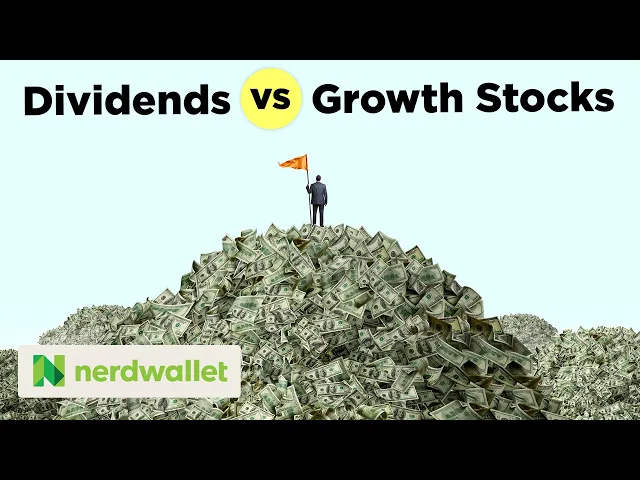What Is a Dividend and How Do They Work?
Dividends are regular payments of profit made to investors who own a company's stock.
Many, or all, of the products featured on this page are from our advertising partners who compensate us when you take certain actions on our website or click to take an action on their website. However, this does not influence our evaluations. Our opinions are our own. Here is a list of our partners and here's how we make money.
The investing information provided on this page is for educational purposes only. NerdWallet, Inc. does not offer advisory or brokerage services, nor does it recommend or advise investors to buy or sell particular stocks, securities or other investments.
A dividend is a payment from a company to its investors.
You can earn a dividend if you own stock in a company that pays dividends, such as Exxon Mobil (XOM) or Verizon (VZ).
What is a dividend?
A dividend is a payment from a company to its investors. Not all stocks pay dividends. If you are interested in investing for dividends, you will want to specifically choose dividend stocks.
Companies that increase their dividend payments year after year are usually less volatile than the broader market. And the steady income from dividends can help smooth out a stock’s total return.
» Need a brokerage account? Check out our picks for the best online brokerages for dividend investing
How do dividends work?
Imagine you own 30 shares in a company and that company pays $2 in annual cash dividends. You will receive $60 per year. Here’s how it works.
1. A company earns profits.
2. The company’s board of directors approve a plan to share those profits in the form of a dividend. A dividend is paid per share of stock. U.S. companies usually pay dividends quarterly, monthly or semiannually.
3. The company announces when the dividend will be paid, the amount and the ex-dividend date. Investors must have bought the stock at least two days before the official date of a dividend payment (the "date of record") in order to receive that payment.
4. The company pays out the dividend to shareholders.
The ex-dividend date is extremely important to investors: Investors must own the stock by that date to receive the dividend. Investors who purchase the stock after the ex-dividend date will not be eligible to receive the dividend. Investors who sell the stock after the ex-dividend date are still entitled to receive the dividend, because they owned the shares as of the ex-dividend date.
Dividends can be paid out in cash, or they can come in the form of additional shares. This type of dividend is known as a stock dividend.
Companies that pay dividends
Dividends on common stock — like any investment — are never guaranteed. However, dividends are more likely to be paid by well-established companies that no longer need to reinvest as much money back into their business. As a result, stocks that pay dividends can provide a stable and growing income stream.
Dividends are considered an indication of a company's financial well-being. Once a company establishes or raises a dividend, investors expect it to be maintained, even in tough times. Investors often devalue a stock if they think the dividend will be reduced, which lowers the share price.
According to research from Fidelity, during periods of inflation, “stocks that increased their dividends the most outperformed the broad market, on average."
The most reliable American companies have a record of growing dividends — with no cuts — for decades. Examples of companies that pay dividends include Exxon, Target, IBM, Sherwin-Williams Co., and Johnson & Johnson. An elite list of S&P 500 stock companies called the dividend aristocrats have increased their dividend every year for at least 25 years. By comparison, high-growth companies, such as tech or biotech companies, rarely pay dividends because they need to reinvest profits into expanding that growth.
Brokerage firms | |
|---|---|
How to evaluate dividends
An investor can use different methods to learn more about a company's dividend and compare it to similar companies.
Dividend per share (DPS)
Companies that can increase dividends year after year are often more attractive to investors. The dividend per share calculation shows the amount of dividends distributed by the company for each share of stock during a certain time period. Keeping tabs on a company’s DPS allows an investor to see which companies are able to grow their dividends over time.
Dividend yield
Financial websites or online brokers will report a company’s dividend yield, which is a measure of the company’s annual dividend divided by the stock price on a certain date.
The dividend yield evens the playing field and allows for a more accurate comparison of dividend stocks: A $10 stock paying $0.10 quarterly ($0.40 per share annually) has the same yield as a $100 stock paying $1 quarterly ($4 annually). The yield is 4% in both cases.
Yield and stock price are inversely related: When one goes up, the other goes down. So, there are two ways for a stock’s dividend yield to go up:
The company could raise its dividend. A $100 stock with a $4 dividend might see a 10% increase in its dividend, raising the annual payout to $4.40 per share. If the stock price doesn’t change, the yield becomes 4.4%.
The stock price could go down while the dividend remains unchanged. That $100 stock with a $4 dividend might decline to $90 per share. With that same $4 dividend, the yield would become just over 4.4%.
Dividend payout ratio
Advisors say one of the quickest ways to measure a dividend’s safety is to check its payout ratio, or the portion of its net income that goes toward dividend payments. If a company pays out 100% or more of its income, the dividend could be in trouble. During tougher times, earnings might dip too low to cover dividends. Like a stock's dividend yield, the company's payout ratio will be listed on financial or online broker websites.
Be sure to check the stock's dividend payout ratio, or the portion of a company’s net income that goes toward dividend payments. Payout ratios are one measure of dividend health, and they are listed on financial or online broker websites.
6 types of dividends
Usually, dividends are paid out on a company’s common stock. There are several types of dividends a company can choose to pay out to its shareholders.
1. Cash dividends
The most common type of dividend. Companies generally pay these in cash directly into the shareholder's brokerage account.
2. Stock dividends
Instead of paying cash, companies can also pay investors with additional shares of stock.
3. Dividend reinvestment programs (DRIPs)
Investors in DRIPs are able to reinvest any dividends received back into the company's stock, often at a discount. DRIPs typically aren't mandatory; investors can choose to receive the dividend in cash instead.
4. Special dividends
These dividends pay out on all shares of a company’s common stock, but don’t recur like regular dividends. A company often issues a special dividend to distribute profits that have accumulated over several years and for which it has no immediate need.
5. Preferred dividends
Payouts issued to owners of preferred stock. Preferred stock is a type of stock that functions less like a stock and more like a bond. Dividends are usually paid quarterly, but unlike dividends on common stock, dividends on preferred stock are generally fixed.
6. Dividend funds
Investors who don't want to research and pick individual dividend stocks to invest in might be interested in dividend mutual funds and dividend exchange-traded funds (ETFs). These funds are available to a range of budgets, hold many dividend stocks within one investment and distribute dividends to investors from those holdings.
NerdWallet rating 4.8 /5 | NerdWallet rating 4.5 /5 | NerdWallet rating 5.0 /5 |
Fees $0 per online equity trade | Fees $0 per trade. Other fees apply. | Fees $0 per trade for online U.S. stocks and ETFs |
Account minimum $0 | Account minimum $0 | Account minimum $0 |
Promotion None no promotion available at this time | Promotion Get up to $1,000 when you open and fund an E*TRADE brokerage account. Terms apply. | Promotion None no promotion available at this time |
Are dividends taxed?
All types of dividends are taxable. Dividends paid by U.S.-based or U.S.-traded companies to shareholders who have owned the stock for at least 60 days are called qualified dividends and are subject to capital gains tax rates. All other dividends are subject to ordinary income tax rates.
Dividend vs. growth stocks
Learn more about the difference between dividend and growth stocks, and what they add to your portfolio.












